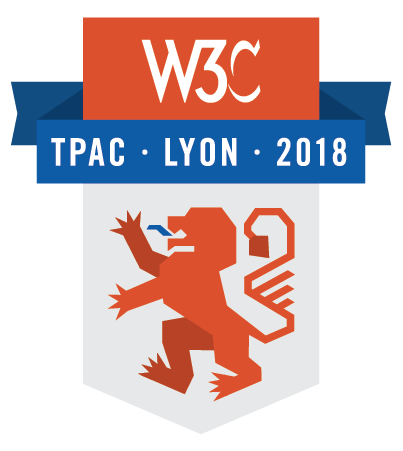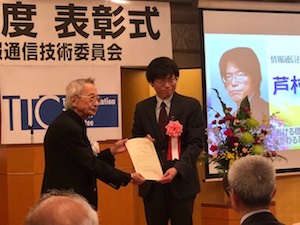News
W3C offers Diversity Scholarships
20 June 2018 | Archive
 W3C announced today it was offering Diversity Scholarships. The announcement was made as part of the publication of W3C top-level diversity statistics.
W3C announced today it was offering Diversity Scholarships. The announcement was made as part of the publication of W3C top-level diversity statistics.
The lack of diversity in tech is a longstanding issue. We would like W3C to be a model of supporting diversity. As an international organization we can see the immense value we gain from having expertise from across multiple countries and cultures. Soon 50% of the world will be on the Web. We know we will need to reflect the diversity of the whole of our world as more and more people begin to access, use and continue to create the Web in all its full potential.
During the Spring W3C Advisory Committee Meeting, a panel on diversity focused on progress we have made and how much more is required. W3C has established a modest fund for TPAC Diversity Scholarships, sponsored by W3C Members Samsung Electronics, The Paciello Group, Consensus System and Microsoft.
Applicants must be from a traditionally underrepresented and/or marginalized group in the Web community, including but not limited to: persons identifying as LGBTQ, women, persons of color, and/or persons with disabilities; and be unable to attend without some financial assistance. Please submit or share with friends who qualify and might be interested, by 15 July.
If your organization or yourself wishes to become a sponsor, please e-mail us!
W3C Staff Kaz Ashimura wins TTC award for Information Communication Technology
19 June 2018 | Archive
 Today June 19th, 2018, Kazuyuki Ashimura, W3C staff contact for WoT and Media and Entertainment was presented by the President of
TTC
the award for Information Communication Technology in Shiba, Tokyo, Japan, recognizing contributions and promotion of Web standardization in Japan.
Today June 19th, 2018, Kazuyuki Ashimura, W3C staff contact for WoT and Media and Entertainment was presented by the President of
TTC
the award for Information Communication Technology in Shiba, Tokyo, Japan, recognizing contributions and promotion of Web standardization in Japan.
A W3C team contact since 2005, Kaz has dedicated standardization work in W3C groups for various technical themes, promoting the viewpoint of “global standardization” and bringing Japan’s efforts to global discussions, championing issues for consideration at W3C, and contributing greatly to standardization deliberations. Read more about recent work at W3C in Media & Entertainment, Web of Things (and more).
CSS Basic User Interface Module Level 3 (CSS3 UI) is now a W3C Recommendation
21 June 2018 | Archive
The CSS Working Group has published CSS Basic User Interface Module Level 3 (CSS3 UI) as a W3C Recommendation. This specification describes user interface related properties and values that are proposed for CSS level 3 to style HTML and XML (including XHTML). It includes and extends user interface related features from the properties and values of CSS level 2 revision 1. It uses various properties and values to style basic user interface elements in a document. This specification is implemented in all modern browsers.
CSS is a language for describing the rendering of structured documents (such as HTML and XML) on screen, on paper, in speech, etc.
W3C Invites Implementations of WebRTC 1.0: Real-time Communication Between Browsers
21 June 2018 | Archive
The Web Real-Time Communications Working Group invites implementations of an updated Candidate Recommendation of WebRTC 1.0: Real-time Communication Between Browsers. The WebRTC 1.0 specification defines JavaScript APIs to enable real-time audio, video and data exchange on the Web. Since the previous publication as Candidate Recommendation, the specification was updated with a number of bug fixes and clarifications in its algorithms. The following new APIs were added as part of these improvements: RTCRtpSender.setStreams(), RTCRtpTransceiver.currentDirection, RTCSctpTransport.maxChannels, RTCPeerConnection.onstatsended, and the RTCStatsEvent interface.
CSS Color Module Level 3 is a W3C Edited Recommendation
19 June 2018 | Archive
The CSS Working Group has published CSS Color Module Level 3 as a W3C Edited Recommendation. CSS (Cascading Style Sheets) is a language for describing the rendering of HTML and XML documents on screen, on paper, in speech, etc. It uses color-related properties and values to color the text, backgrounds, borders, and other parts of elements in a document. This specification describes color values and properties for foreground color and group opacity. These include properties and values from CSS level 2 and new values. This specification incorporates errata raised against the previous W3C Recommendation for CSS Color 3. This specification is fully implemented in all modern browsers.
W3C Invites Implementations of Accessible Name and Description Computation 1.1
19 June 2018 | Archive
The Accessible Rich Internet Applications (ARIA) Working Group invites implementations of Accessible Name and Description Computation 1.1 Candidate Recommendation. This document describes how user agents determine the names and descriptions of accessible objects from web content languages. This information is in turn exposed through accessibility APIs so that assistive technologies can identify these objects and present their names or descriptions to users. Documenting the algorithm through which names and descriptions are to be determined promotes interoperable exposure of these properties among different accessibility APIs and helps to ensure that this information appears in a manner consistent with author intent.
This document updates and will eventually supersede the accessible name and description guidance in the WAI-ARIA 1.0 User Agent Implementation Guide W3C Recommendation. It is part of the WAI-ARIA suite described in the WAI-ARIA Overview.
